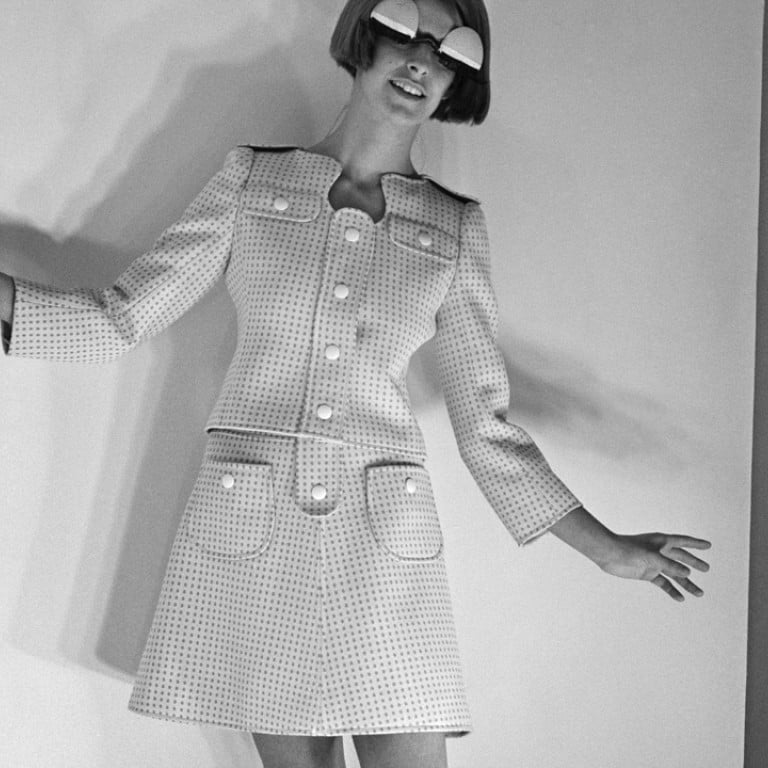
Andre Courreges, designer who gave the world the miniskirt, dies at 92
At the cutting edge of fashion for decades, French designer not only pioneered the mini but was among first to dress women in trousers and use vinyl and form-fitting Lycra in his designs
Andre Courreges, the innovative French fashion designer whose creations spoke of the future, symbolised stylistic freedom and provoked hot dispute over whether he was first with the miniskirt, has died at his home outside Paris. He was 92.
SEE ALSO: Queen of hot pants, fashion designer Mariuccia Mandelli, remembered
According to the Courreges firm, he had suffered from Parkinson’s disease for 30 years.
One of the most influential couturiers of his time, Courreges won fame for fitting out his models in attire that seemed to suggest not past eras or conventions, but the space age.

In the rarefied world of high-end fashion, partisans took sides as to whether Courreges or British designer Mary Quant deserved more credit for creating the miniskirt in the mid-1960s.
The knee-baring garment seemed to stand for all the sauciness of the ’60s and what the decade represented in banishing the stodgy in favour of the swinging.

According to British newspaper The Independent, “Courreges was the inventor of the miniskirt: at least in his eyes and those of the French fashion fraternity ... The argument came down to high fashion vs street fashion and to France versus Britain – there’s no conclusive evidence either way.”
In either case, brevity was all.

Another of his best-known designs was the go-go boot, which bespoke the joyous, kicky enthusiasms of the 1960s. The first ones, white, flat-heeled, rising to the mid calf, were followed by any number of variants, in height and materials.
Throughout his career, Courreges was known for forward-looking designs, with clean, unadorned lines representing activity and motion.

Stark, angular and often triangular in design, his simple garments, such as the A-line dress and what he called “the little white dress”, seemed to evoke flight and the world of the new. He also designed boots, helmets and goggles, which followers of fashion dubbed the “Moon Girl” look.
Courreges had firm ideas on what constituted fashion liberation.
“A woman’s body must be hard and free,” he told a French magazine editor when she came for a fitting in 1965. “Not soft and harnessed. The harness – the girdle and bra – is the chain of the slave.”
Although not all of them chose the same styles, Courreges’ clients reportedly included former US first lady Jacqueline Kennedy and actresses Catherine Deneuve, Brigitte Bardot and Audrey Hepburn. A 1969 photograph showed Nancy Reagan in a Courreges coat.

He found his way into the fashion world in the late ’40s, working on the staff of well-known designer Cristobal Balenciaga.
Courreges launched his own fashion house in 1961. His wife, Jacqueline Barriere, took over when illness forced Courreges to withdraw in 1994. The Courreges fashion house was eventually sold in 2011.
He is survived by his wife of 49 years and a daughter.
In his later years, some fashion observers suggested Courreges had been left behind by new trends and new visions. He did not see it just that way.
“The world’s creativity stopped in 1970,” he was once quoted as saying. “If they want to create something new, they have to go back to 1970s Courreges.”
Tribune News Service

